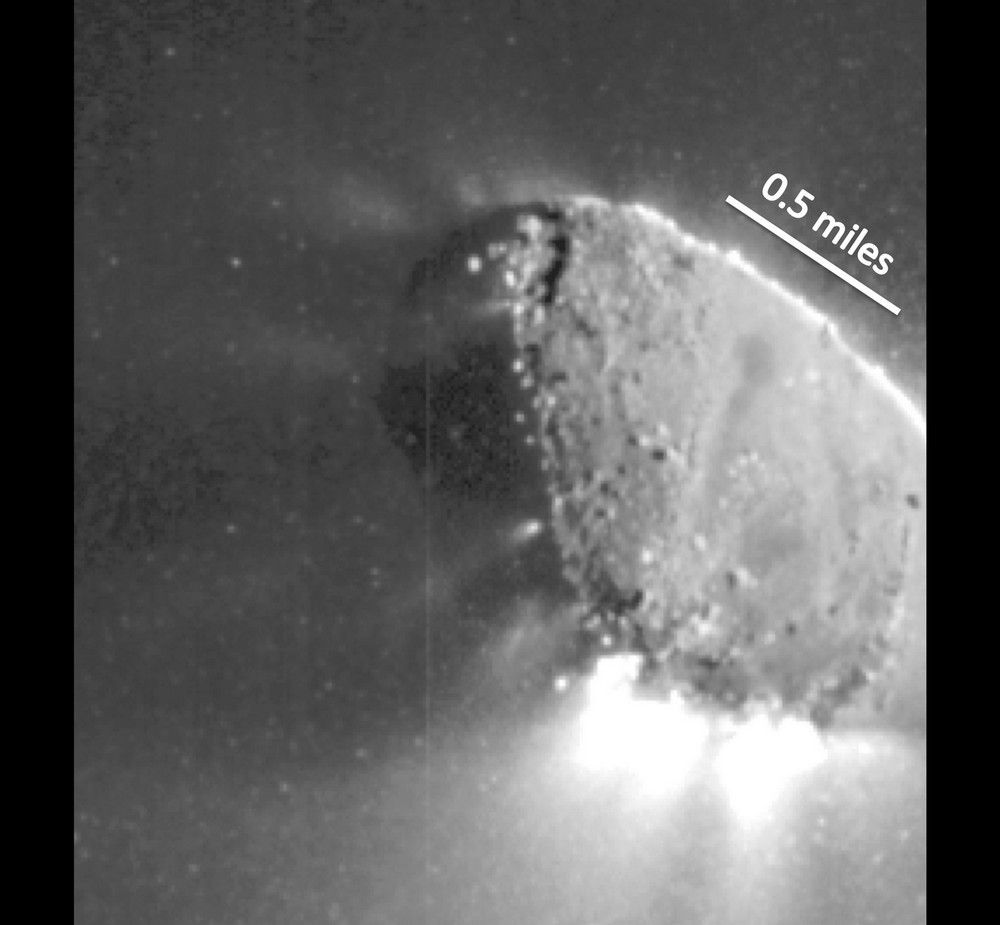-
 Cupid
Cupid
-
 Bit rate
Bit rate
-
 Polar coordinates of a direction
Polar coordinates of a direction
-
 Podzolisation
Podzolisation
-
 Blood-brain
Blood-brain
-
 Chilblain
Chilblain
-
 Active centre
Active centre
-
 Fairing
Fairing
-
 Genetics
Genetics
-
 Gaia
Gaia
-
 Cannula
Cannula
-
 Red Spot Junior
Red Spot Junior
-
 UML
UML
-
 Videotex
Videotex
-
 Therapy
Therapy
-
 CGS system
CGS system
-
 Glycoprotein
Glycoprotein
-
 Mitosis
Mitosis
-
 Permian
Permian
-
 Integrated surface coating
Integrated surface coating
-
 Guanine
Guanine
-
 Mublcom
Mublcom
-
 Semelparity
Semelparity
-
 Dyslexia
Dyslexia
-
 Pubescent
Pubescent
-
 Nerve root
Nerve root
-
 Ribozyme
Ribozyme
-
 Non-essential amino acids
Non-essential amino acids
-
 CPU cache
CPU cache
-
 Decarboxylation
Decarboxylation
Hartley 2 comet
In 1986, the year of the grand return of Halley's comet, the British astronomer Malcolm Hartley who was working at the Anglo-Australian observatory at Siding Spring discovered 103P/Hartley (Hartley 2), one of eight comets he discovered. It is a periodic comet that returns on average every six years.
2010, the latest passage of the comet
It returned close to the Earth (18 million kilometres) in the autumn of 2010. Under the action of the Sun, the comet outgassed mainly cyanogen, giving it a beautiful green colour. It was monitored by astronomers throughout October, and turned out to be very active: while its nucleus only measures 2 kilometres, its coma (or "hair", the nebulous envelope around the nucleus) extended to 150,000 kilometres, the diameter of Jupiter.
On 4 November, Hartley 2 was flown over by a probe at a distance of 700 kilometres. This was Epoxi (for Extrasolar Planet Observation and Deep Impact Extended Investigation), a mission for the re-use of the Deep Impact probe which, five years earlier, had encountered another hirsute comet, Tempel 1. In September, Epoxi recorded an unexpected burst, with the cyanogen production rate suddenly multiplied by five before returning to its normal level a week later. The probe also measured the comet's period of rotation which was of the order of 18 hours.
The Epoxi mission investigations continued until the fly-over on 4 November, when it photographed the comet's surface and measured the high level of carbon dioxide jets which contain grains of dust from the surface, which are then found in the comet's nebulous envelope and tail.
 This high resolution image taken on 4 November by the Epoxi probe shows the distribution of jets on the Hartley 2 comet. © NASA/JPL-Caltech/UMD
This high resolution image taken on 4 November by the Epoxi probe shows the distribution of jets on the Hartley 2 comet. © NASA/JPL-Caltech/UMD
Latest
Fill out my online form.



